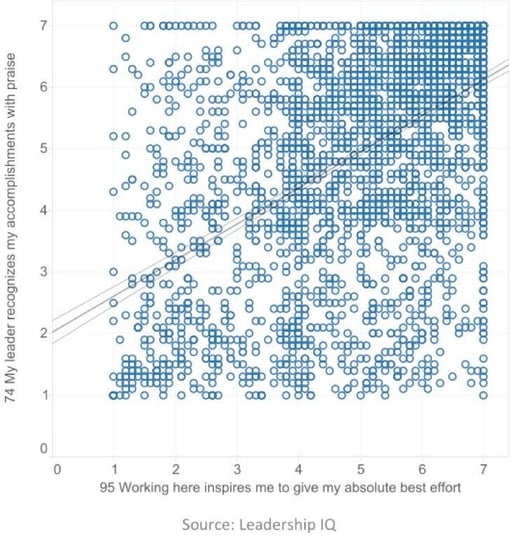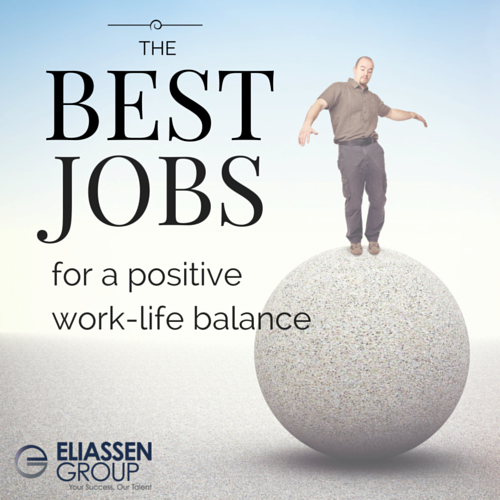Good job.
Two simple words that we, as human beings, crave from the first time we hear them. Not everyone requires the societal approval of others, but the overwhelming majority of people thrive on affirmation and positive reinforcement. This is especially true in the workplace, where the definition of personal success is tied directly to management satisfaction.
Positive reinforcement can take many forms, from monetary compensation to flexible and extended workplace benefits. But for simplicity, I’ll focus on the easiest form that doesn’t cost a dime — verbal positive reinforcement.
Why You Should Care About Positive Reinforcement in the Workplace
Any successful businessperson will laud the importance of intelligent investments and a collection of assets. Ultimately, the train cannot stay on the track without the sheer manpower fueling it. As described in “How to Motivate Employees with Positive Reinforcement” published by Joe Emerson on behalf of University of South Florida,
“With an eye toward keeping the arc of success curving up, you oversee smart investments of time and resources in your most valuable intangible asset, people. One proven approach to getting tangible results from investing in your people: Learn how to motivate employees with positive reinforcement.” 1
Forbes published an article written by Mark Murphy on this very topic titled “The Cheapest Way To Make Your Employees More Inspired,” which includes revealing research conducted by Leadership IQ. 2 They queried more than 30,000 employees who answered more than 100 questions about their workplace. The statistics, demonstrated in the chart below, showed an astonishing positive correlation between the following two positive reinforcement statements:
My leader recognizes my accomplishments with praise.
Working here inspires me to give my best effort.

Put simply, praise, a form of positive reinforcement, inspires employees to work hard and produce their best work, thereby directly benefiting the company. When you parse down the data even further, it is revealed that, “…more than a quarter of your employees’ inspiration and effort comes from whether you, as their leader, recognize their accomplishments with praise. Seems like a pretty large return on investment for an action that takes five minutes of your time.” 2
How to Give Positive Reinforcement -- the Right Way
Verbal positive reinforcement in the workplace is nearly as easy as it sounds if you remember to keep your positive feedback both prompt and sincere. Murphy explains, “You don’t need to blow constant smoke to keep people motivated with positive reinforcement. In fact, doling out meaningless praise is guaranteed to work against you.” 2 No one is asking for constant disingenuous compliments. Superficial compliments are meaningless and feedback of any form that’s too frequent quickly becomes annoying. Pay attention and offer your sincere praise when the right moment arises.
“Catching employees doing “it” right increases the likelihood that they will repeat the desired behaviors, and leaders’ acknowledgment of such behaviors serves as positive reinforcement by nurturing employees’ self-confidence. Increased self-confidence, bolstered by continuous reinforcement, inspires people to do their best work, enabling them to make a dramatic and lasting impact on the organization.” -Harvard Business Review3
When thinking of examples of positive reinforcement in the workplace, try to be as specific as possible. Saying “good job,” is useful, but providing more color not only signals to the employee that your praise is genuine and the product of true reflection on their work, but it also gives them a more detailed picture of what about their performance you appreciated and would like to see again in the future.
One more thing to remember is that a positive message can easily be lost when presented with criticism. Again, your positive words can be misconstrued as disingenuous when positioned as an opener for follow-up criticism. Of course, there is also a place for constructive criticism, but both your positive reinforcement and constructive feedback will carry more weight when delivered separately, in their respective appropriate contexts. 2
“Never assume that an employee knows he/she is doing a good job. Support self-efficacy by ‘catching them doing well’ and praising their efforts.” -Positive Psychology4
It may sound simple, but positive reinforcement is an incredible morale and performance booster in the workplace and in life. The highest salaries and most competitive benefits can only keep employees satisfied for so long in the absence of a healthy and positive workplace environment in which employees are celebrated. And this isn’t just speculation- statistics prove it. In a white paper presenting O.C. Tanner Learning Group’s research related to Employee Retention, Engagement, and Results, it was revealed that a remarkable “79% of employees who quit their jobs cite a lack of appreciation as a key reason for leaving.” 5 Ultimately, if an employee’s company isn’t giving them the positive reinforcement they might need to feel successful, they have untethered access to other companies that will, with a single click of the mouse.
1. Emerson, Joe. “How to Motivate Employees with Positive Reinforcement.” University of South Florida. https://corporatetraining.usf.edu/blog/how-to-motivate-employees-with-positive-reinforcement . Accessed 30 Aug 2021.
2. Murphy, Mark. “The Cheapest Way To Make Your Employees More Inspired.” Forbes. https://www.forbes.com/sites/markmurphy/2016/08/21/the-cheapest-way-to-make-your-employees-more-inspired/?sh=5183f95b326b . Accessed 30 Aug 2021.
3. Jones, Bruce. “ How Positive Reinforcement Keeps Employees Engaged.” Harvard Business Review. https://hbr.org/sponsored/2017/02/how-positive-reinforcement-keeps-employees-engaged .Accessed 30 Aug 2021.
4. Lonczak, Heather S. “Positive Reinforcement in the Workplace (90+ Examples & Reward Ideas).” PositivePsychology.com, https://positivepsychology.com/positive-reinforcement-workplace/ . Accessed 30 Aug 2021.
5. O.C. Tanner Learning Group. “Performance: Accelerated. A New Benchmark for Initiating Employee Engagement, Retention and Results.” O.C. Tanner. https://www.octanner.com/content/dam/oc-tanner/documents/global-research/White_Paper_Performance_Accelerated.pdf . Accessed 30 Aug 2021.

.png)

